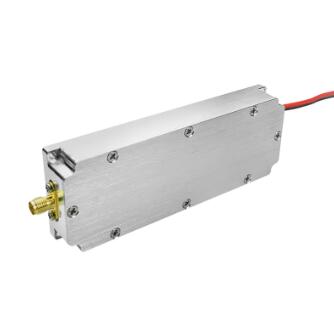How Remote Control Anti-Drone Defense Systems Work: A Deep Dive into Their Operation and Effectiveness
2024-08-07
With the growing prevalence of drones in various spheres, including personal, commercial, and malicious uses, the need for effective counter-drone technologies is more critical than ever. Remote Control Anti-Drone Defense Systems offer a sophisticated approach to neutralizing potential drone threats. In this blog, we'll take a detailed look at how these systems work, their operational mechanisms, and their effectiveness in providing security.
1. Detection and Identification
The first step in a remote control anti-drone defense system is detecting and identifying potential threats. This involves several key technologies:
- Radar Systems: Radar systems detect the presence of drones by bouncing radio waves off their surfaces. They can provide information on the drone’s position, speed, and altitude.
- Radio Frequency (RF) Sensors: RF sensors are designed to pick up the communication signals between the drone and its operator. They help in identifying the type of drone and its operational status.
- Optical and Infrared Cameras: These cameras provide visual and thermal data to aid in the identification and tracking of drones, especially in low-light conditions.
2. Tracking and Analysis
Once a drone is detected, the system must track its movement to assess the threat level and determine the appropriate countermeasures. This involves:
- Real-Time Tracking: Advanced algorithms analyze data from radar, RF sensors, and cameras to provide real-time tracking of the drone’s path and behavior.
- Threat Assessment: The system evaluates whether the drone poses a threat based on its behavior, flight path, and proximity to restricted areas. This assessment is crucial for deciding the most effective countermeasure.
3. Countermeasures and Interception
Depending on the threat assessment, the anti-drone system deploys countermeasures to neutralize the drone. These countermeasures include:
- Signal Jamming: The system can jam the drone’s communication signals, disrupting its control link and forcing it to land or return to its point of origin.
- GPS Spoofing: By sending false GPS signals, the system can mislead the drone's navigation system, causing it to lose its way or return to its takeoff point.
- Physical Interception: Some advanced systems use net guns, drones equipped with nets, or directed energy weapons to physically capture or disable the drone.
4. Integration and Automation
Modern anti-drone systems often integrate with existing security infrastructures and use automation to enhance effectiveness:
- Integration: Anti-drone systems can be integrated into broader security networks, providing seamless protection and coordination with other security measures
- Automation: Automated systems can independently detect, track, and neutralize drones with minimal human intervention, ensuring rapid response to potential threats.
5. Effectiveness and Limitations
- Effectiveness: Remote control anti-drone defense systems are highly effective in neutralizing threats and protecting sensitive areas. They provide a robust layer of security against unauthorized or malicious drones.
- Limitations: Challenges such as limited range, potential for interference, and the need for continuous updates to counter evolving drone technologies can impact effectiveness. However, ongoing advancements are addressing these limitations.
Conclusion
Remote Control Anti-Drone Defense Systems are at the forefront of modern security technology, offering advanced capabilities to detect, track, and neutralize potential drone threats. By understanding their operational mechanisms and effectiveness, organizations can better appreciate the role these systems play in safeguarding security and privacy in an increasingly drone-dominated world.



